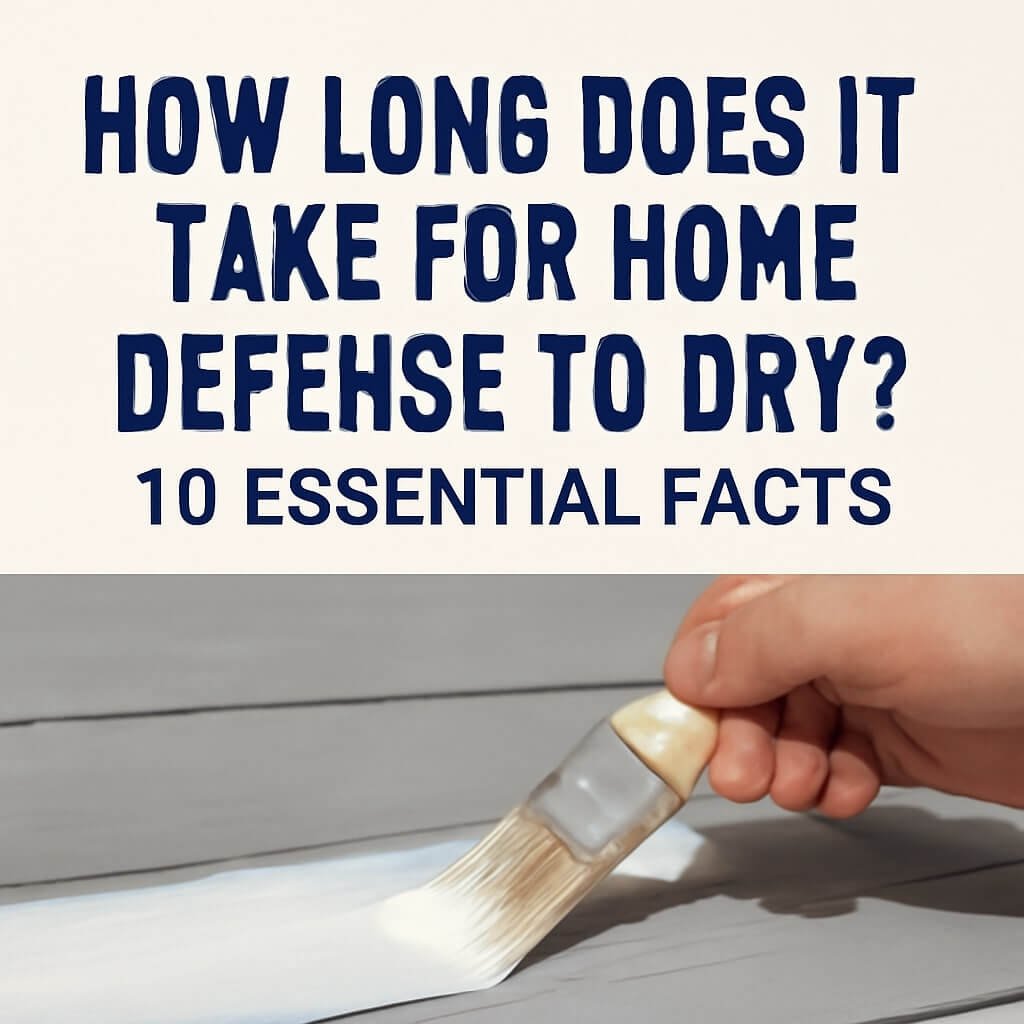When it comes to protecting your home, knowing how long it takes for home defence products to dry is crucial. Whether you’re applying paint or protective coatings to keep pests or damage at bay, drying time affects your project’s success and safety. This article dives deep into the drying process, covering everything from types of home defence products to environmental factors that can speed up or slow down drying. Let’s explore the essential facts you need to know.
Understanding Home Defence Products
Home defence products cover a wide range of materials designed to safeguard your home, including paints, coatings, sealants, and treatments. These products are often applied to exterior surfaces like siding, decks, fences, or even interior areas prone to moisture or pests.
Types of Home Defence Paints and Coatings
The drying time largely depends on the type of product used. Here are the common types:
- Latex-based paints: Water-based, easy to clean, and popular for home use.
- Oil-based paints: Durable and excellent for harsh conditions, but take longer to dry.
- Acrylic coatings: Provide a flexible, weather-resistant layer.
- Specialty coatings: Include pest repellents, waterproof sealants, and mould-resistant paints.
Each of these has different drying characteristics based on its chemical makeup.
Key Ingredients That Affect Drying Time
Ingredients like solvents and binders play a big role in drying. Water or organic solvents evaporate during drying, allowing the paint to harden. Additives might speed up drying or improve adhesion, but could also extend drying time if used heavily.
Factors Influencing Drying Time
Several environmental and application factors influence how fast your home defence product dries.
Temperature and Humidity
Warm, dry conditions help solvents evaporate faster, reducing drying time. Conversely, cold or humid environments slow evaporation, extending drying times significantly.
Surface Type and Preparation
Porous surfaces like wood absorb more paint, affecting drying speed. Proper surface prep, such as cleaning and sanding, ensures better adhesion and more consistent drying.
Application Thickness and Method
Thicker coats take longer to dry. Application methods like spraying tend to apply thinner layers, drying faster than brush or roller methods. Multiple coats add cumulative drying time.
Typical Drying Times for Popular Home Defence Products
Understanding typical drying times can help you plan your project efficiently.
Latex-Based Home Defence
Latex paints usually dry to the touch within 1 hour and fully cure within 24 hours, depending on conditions.
Oil-Based and Alkyd Home Defence
These take longer, often 6-8 hours to dry to the touch and up to 48 hours to cure fully.
Fast-Dry Formulas
Some products feature fast-dry technology, drying within 30 minutes to 1 hour to touch, ideal for quick jobs or humid climates.
Step-by-Step Guide to Proper Application
Following best practices can optimise drying time and product effectiveness.
Surface Preparation
Always clean, sand, and prime surfaces. Removing dust and old paint ensures proper bonding.
Choosing the Right Tools
Brushes offer control but may apply thicker coats; rollers cover large areas quickly but can trap moisture; sprayers deliver thin, even coats.
Ideal Conditions for Application
Apply during warm, dry weather with low humidity. Avoid windy or rainy days to prevent drying issues.
Troubleshooting Common Drying Problems
Sometimes, drying takes longer than expected. Here’s how to troubleshoot.
Causes of Extended Drying Times
- High humidity or low temperature
- Thick paint layers or multiple coats applied too quickly
- Poor ventilation
- Old or expired product
How to Fix and Avoid Problems
- Apply thinner coats and allow adequate drying between layers.
- Improve airflow using fans or open windows.
- Store products properly and check expiration dates.
Safety and Environmental Considerations
Many home defence products emit fumes during drying.
- Work in well-ventilated areas.
- Wear protective gear like masks and gloves.
- Choose eco-friendly products when possible to reduce environmental impact.
Frequently Asked Questions (FAQs)
1. How soon can I walk on a surface painted with home defence products?
Typically, wait 24-48 hours to ensure the coating has cured enough to withstand foot traffic.
2. Does humidity affect drying time?
Yes, high humidity slows solvent evaporation, increasing drying times.
3. Can I speed up drying time?
Using fans, heaters, or applying thinner coats helps, but be cautious not to compromise the finish.
4. What if my paint never seems to dry?
Check for poor ventilation, thick layers, or expired product; these often cause prolonged drying.
5. Is drying time the same as curing time?
No. Drying is when the surface feels dry; curing is when the paint fully hardens, which takes longer.
6. Are fast-dry home defence products less durable?
Not necessarily; many modern fast-dry formulas maintain strong protection, but always check manufacturer specs.
Conclusion and Final Tips
Knowing how long it takes for home defence products to dry helps you plan and protect your home effectively. Always consider product type, weather conditions, and application techniques. With proper preparation and patience, you’ll achieve durable, protective finishes that last.













